Goals of Physiotherapy
- Restore range and strength of the hip joint.
- Prevent complications with prolonged bed rest.
- Gradual and safe return to movement in daily activities.
During bed rest, with or without surgery
| Reduce risk of chest infection with prolonged bed rest with this exercise
Take 10 deep breaths hourly. Your abdomen should rise more than your chest.
| 
|
| Deep vein thrombosis can be prevented by promoting blood circulation to your legs.
Flex your foot/feet up and down 10 times hourly.
| 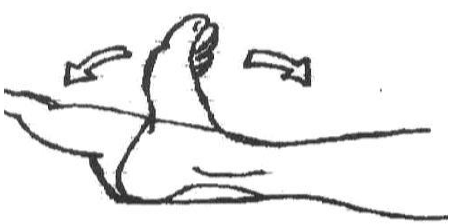
|
If you would like to turn in bed but are unable to do so on your own, please get assistance from the healthcare personnel available.
Turning in bed every 2-3 hourly helps prevent pressure sores from forming on your skin.
Hip Exercises Pre- and Post-Operative
- Do your exercises 3 times daily
- It will help improve your hip range and strength, allowing you to move in bed, transfer and walk more easily when mobility is allowed by the doctor.
- If there are limitations to the range and amount of weight your leg can bear after operation, take precaution when moving, and allow the therapist to advise you.
|
Hip flexion
Aim: Reduce stiffness in the hip
In lying, bend the operated hip by sliding your heel towards your buttock as much as possible, then straighten
Repeat 10 times, hold 10 seconds
| 
|
|
Inner Range Quads
Aim: Strength the knee muscles
With a rolled towel under the knee Slowly lift your leg into full extension
Repeat 10 times, hold 10 seconds
| 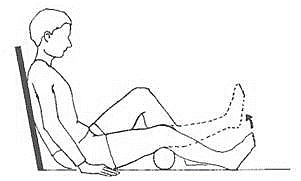 |
|
Straight Leg Raise
Aim: To strengthen the leg muscles
Lie on your back with your knee straight Lift your whole leg off the bed
Repeat 10 times, hold 10 seconds
| 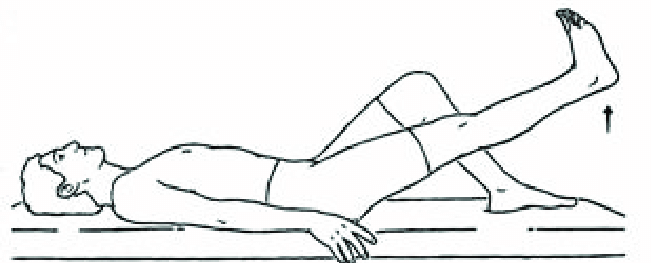 |
| Hip Abduction
Aim: Maintain hip range
Lie down on your back with toes pointing up Slide your leg out sideways and back
Repeat 10 – 20 times
| 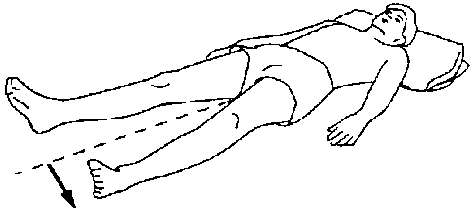 |
| Static Glutes
Aim: To strengthen buttock muscles
Lie down on your back, tighten buttock muscles – simulate lifting your hip up a little
Repeat 10 times, hold 10 seconds
|  |
|
Bridging
Aim: To strengthen buttock muscles
Bend both knees and place feet flat on the surface Tighten buttock muscles and lift your hip up
Repeat 10 times, hold 10 seconds
| 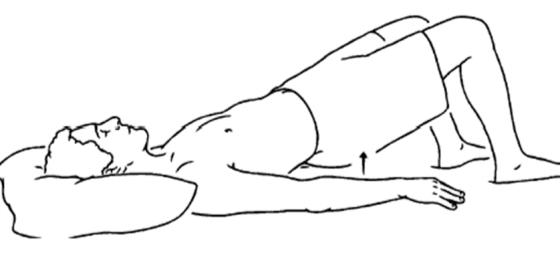 |
Exercises should not cause increasing pain – If it does, stop and rest.
- Apply an ice pack. Seek advice from your physiotherapist before continuing.
- Do rest when you are tired from exercising to avoid injury.
- Apply an ice pack for 15 to 20 minutes to your hip surgical site to reduce swelling and pain, as frequently as 3 to 5 times daily for the first few weeks after surgery.
Let your physiotherapist advise if the exercises are suitable for pre-surgery/ for non-operated leg
General Tips for Your Stay in The Hospital Ward
Please wear proper footwear with good traction over the soles, preferably with a strap at the back of the heel to prevent slipping.
To facilitate discharge planning, please advise on availability of a carer.
Prior to discharge home, caregiver training may be carried out with your carer as needed, to ensure your safety at home and to assist in your rehabilitation.
Fall Precautions at Home
Kitchen
- Items that are frequently used should be kept at waist level.
- Clean all spills immediately.
Bathroom
- Use a shower chair or grab bars if you have difficulty standing in the shower.
- Non-slip floor mats can be placed on the bathroom floor.
Bedroom
- Keep spectacles within an arm's reach at your bedside.
- When getting out of bed, sit and wait a while before standing up to avoid dizziness.
Living areas
- Ensure your home is well-lit.
- Keep the floor free of clutter.
- Ensure wires and cords are not in the way.
- Remove or secure carpets that are frayed or have rolled corners or edges.
- Pillows or higher cushions placed in chairs or sofas can make it easier to rise from a seated position.
Related
